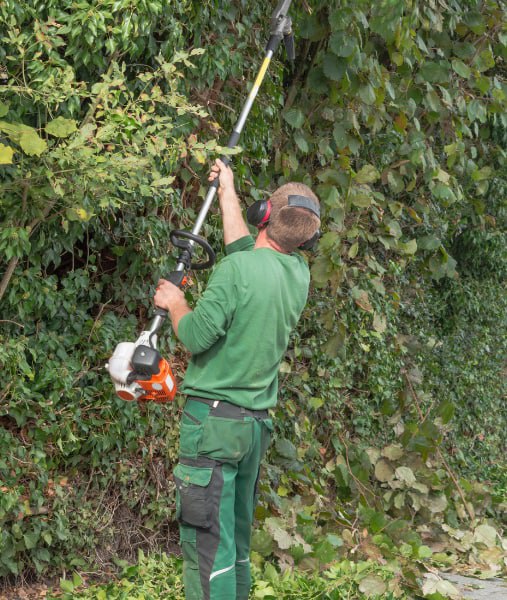
Introduction: Tree crown reduction is a vital tree care practice aimed at reducing a tree’s canopy’s overall size and height. This process involves strategically pruning branches to maintain the tree’s health, improve aesthetics, and manage potential risks. While hiring a professional tree surgeon is always recommended, some homeowners may consider attempting DIY tree crown reduction to save costs. In this blog post, we will explore the pros, cons, and safety considerations associated with DIY tree crown reduction to help homeowners make an informed decision.
Pros of DIY Tree Crown Reduction:
- Cost Savings: One of the primary reasons homeowners may consider DIY tree crown reduction is to save money on professional tree services.
- Personal Satisfaction: Successfully pruning and shaping a tree can bring a sense of accomplishment and pride.
- Small Trees: For smaller trees with easily accessible branches and minimal risk of damage, DIY crown reduction may be manageable.
Cons of DIY Tree Crown Reduction:
- Lack of Expertise: Tree crown reduction requires a deep understanding of tree biology, proper pruning techniques, and potential risks. Without this knowledge, DIY attempts may lead to irreversible damage to the tree.
- Safety Hazards: Tree crown reduction involves working at heights and handling sharp tools, making it potentially dangerous for inexperienced individuals.
- Improper Pruning: Incorrect cuts can cause wounds, disease, and stress to the tree, leading to long-term health issues.
Safety Considerations for DIY Tree Crown Reduction:
- Assess Tree Size: Consider the size and species of the tree. Large, mature trees should not be subjected to DIY crown reduction, as they present higher risks and require specialised equipment.
- Protective Gear: Always wear appropriate safety gear, including helmets, gloves, safety glasses, and sturdy footwear.
- Use the Right Tools: Ensure you have the tools in good working condition. Using dull or damaged equipment can lead to accidents.
- Research and Planning: Educate yourself about proper pruning techniques and the biology of the tree species you work with. Plan the pruning cuts carefully to minimise stress on the tree.
- Know Your Limits: If the tree is too tall, has extensive branches, or poses any risks, it is best to leave crown reduction to professional tree surgeons.
Conclusion: While DIY projects can be rewarding, DIY tree crown reduction poses significant risks and challenges for the inexperienced. Tree crown reduction is a skilled task that requires knowledge, expertise, and safety precautions to preserve the tree’s health and appearance. Hiring a qualified and certified tree surgeon, such as The Tree Surgeon Stafford, is essential to ensure proper tree care and avoid potential damage to the tree or personal injury. Attempting DIY tree crown reduction can lead to irreversible consequences, making it a task best left to the professionals. When it comes to your trees’ well-being, investing in professional tree services ensures both safety and the long-term health of your beloved trees.
Call us on: 01785 569 297
Click here to find out more about The Tree Surgeon Stafford
Click here to complete our contact form and see how we can help with your crown reduction needs.